
Welding equipment manufacturer Lincoln Electric (NASDAQ: LECO) reported revenue ahead of Wall Street’s expectations in Q1 CY2025, with sales up 2.4% year on year to $1.00 billion. Its non-GAAP profit of $2.16 per share was 3.2% below analysts’ consensus estimates.
Is now the time to buy Lincoln Electric? Find out by accessing our full research report, it’s free.
Lincoln Electric (LECO) Q1 CY2025 Highlights:
- Revenue: $1.00 billion vs analyst estimates of $976.1 million (2.4% year-on-year growth, 2.9% beat)
- Adjusted EPS: $2.16 vs analyst expectations of $2.23 (3.2% miss)
- Adjusted EBITDA: $188.7 million vs analyst estimates of $197.6 million (18.8% margin, 4.5% miss)
- Operating Margin: 16.4%, in line with the same quarter last year
- Free Cash Flow Margin: 15.8%, up from 10.9% in the same quarter last year
- Organic Revenue fell 1.2% year on year (-6.2% in the same quarter last year)
- Market Capitalization: $10.31 billion
“We continued to execute well in the quarter with solid core operating results,” said Steven B. Hedlund, Chair, President and Chief Executive Officer.
Company Overview
Headquartered in Ohio, Lincoln Electric (NASDAQ: LECO) manufactures and sells welding equipment for various industries.
Sales Growth
Reviewing a company’s long-term sales performance reveals insights into its quality. Any business can put up a good quarter or two, but the best consistently grow over the long haul. Over the last five years, Lincoln Electric grew its sales at a mediocre 6.5% compounded annual growth rate. This fell short of our benchmark for the industrials sector and is a tough starting point for our analysis.
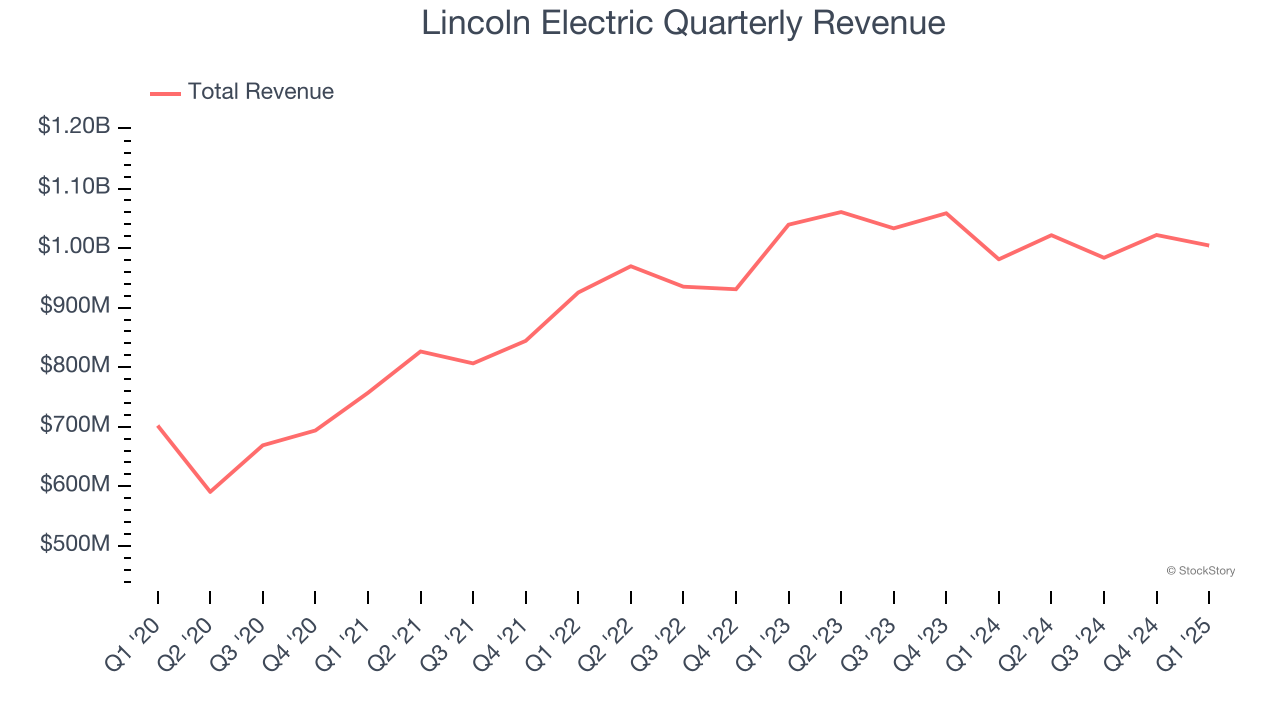
We at StockStory place the most emphasis on long-term growth, but within industrials, a half-decade historical view may miss cycles, industry trends, or a company capitalizing on catalysts such as a new contract win or a successful product line. Lincoln Electric’s recent performance shows its demand has slowed as its annualized revenue growth of 2% over the last two years was below its five-year trend. 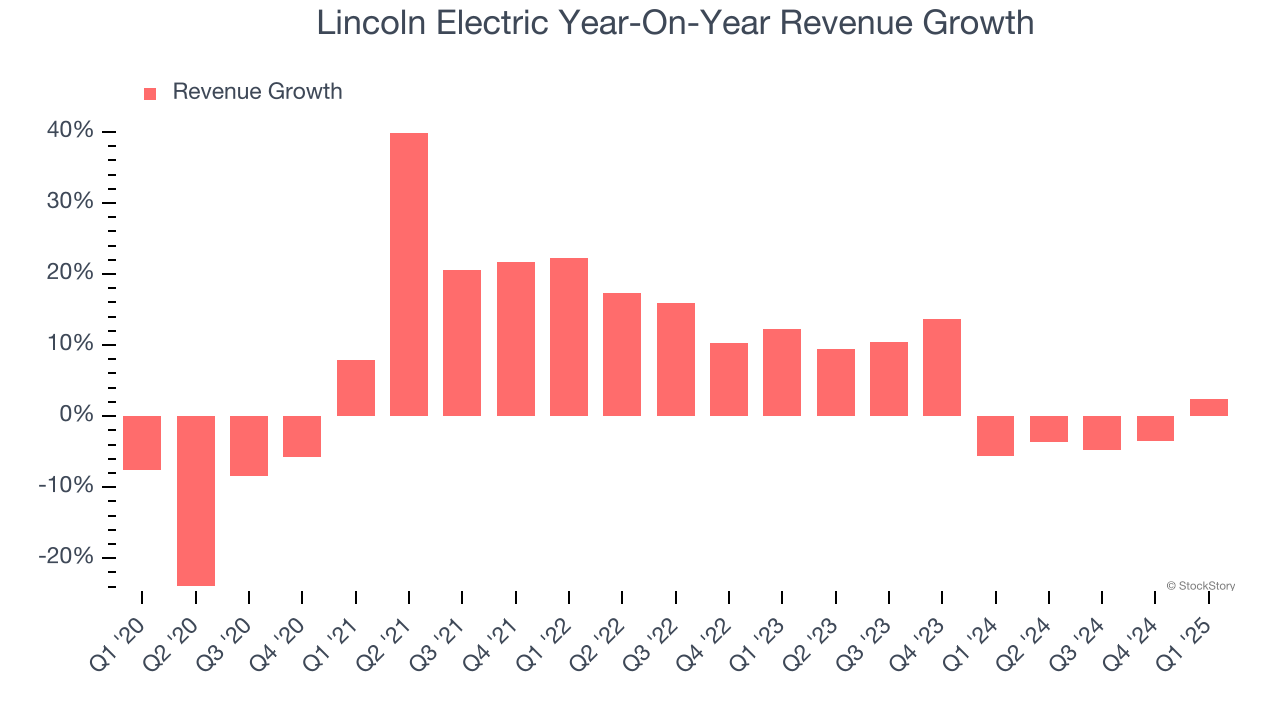
We can dig further into the company’s sales dynamics by analyzing its organic revenue, which strips out one-time events like acquisitions and currency fluctuations that don’t accurately reflect its fundamentals. Over the last two years, Lincoln Electric’s organic revenue averaged 2.5% year-on-year declines. Because this number is lower than its normal revenue growth, we can see that some mixture of acquisitions and foreign exchange rates boosted its headline results. 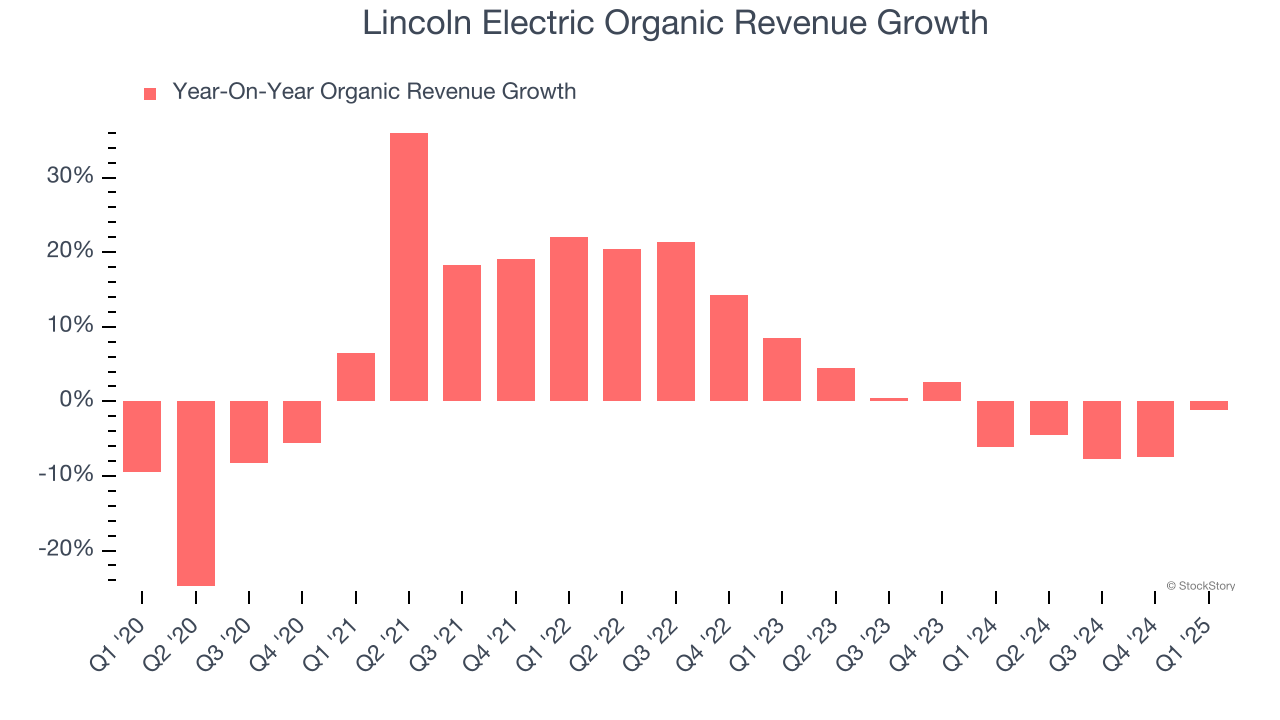
This quarter, Lincoln Electric reported modest year-on-year revenue growth of 2.4% but beat Wall Street’s estimates by 2.9%.
Looking ahead, sell-side analysts expect revenue to grow 1.1% over the next 12 months, similar to its two-year rate. This projection is underwhelming and implies its newer products and services will not catalyze better top-line performance yet.
Unless you’ve been living under a rock, it should be obvious by now that generative AI is going to have a huge impact on how large corporations do business. While Nvidia and AMD are trading close to all-time highs, we prefer a lesser-known (but still profitable) stock benefiting from the rise of AI. Click here to access our free report one of our favorites growth stories.
Operating Margin
Lincoln Electric has been an efficient company over the last five years. It was one of the more profitable businesses in the industrials sector, boasting an average operating margin of 15.4%. This result isn’t too surprising as its gross margin gives it a favorable starting point.
Analyzing the trend in its profitability, Lincoln Electric’s operating margin rose by 4.5 percentage points over the last five years, as its sales growth gave it operating leverage.
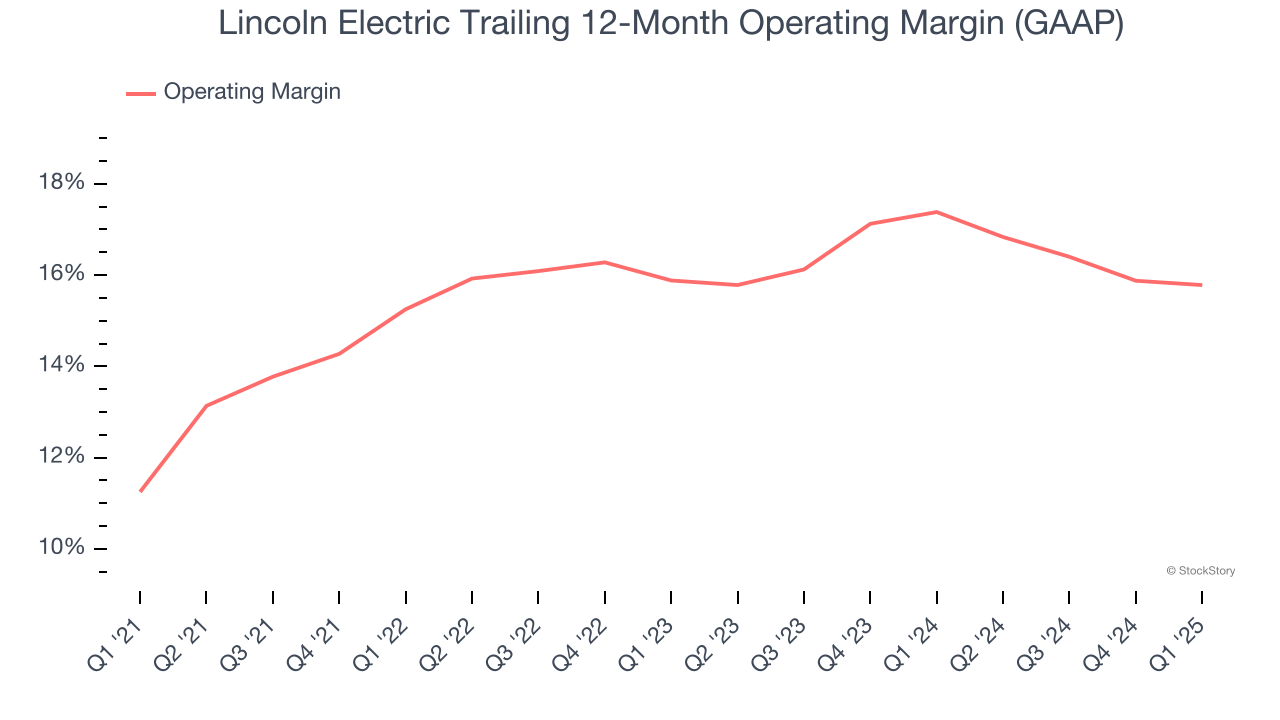
In Q1, Lincoln Electric generated an operating profit margin of 16.4%, in line with the same quarter last year. This indicates the company’s cost structure has recently been stable.
Earnings Per Share
We track the long-term change in earnings per share (EPS) for the same reason as long-term revenue growth. Compared to revenue, however, EPS highlights whether a company’s growth is profitable.
Lincoln Electric’s EPS grew at a spectacular 15.3% compounded annual growth rate over the last five years, higher than its 6.5% annualized revenue growth. This tells us the company became more profitable on a per-share basis as it expanded.
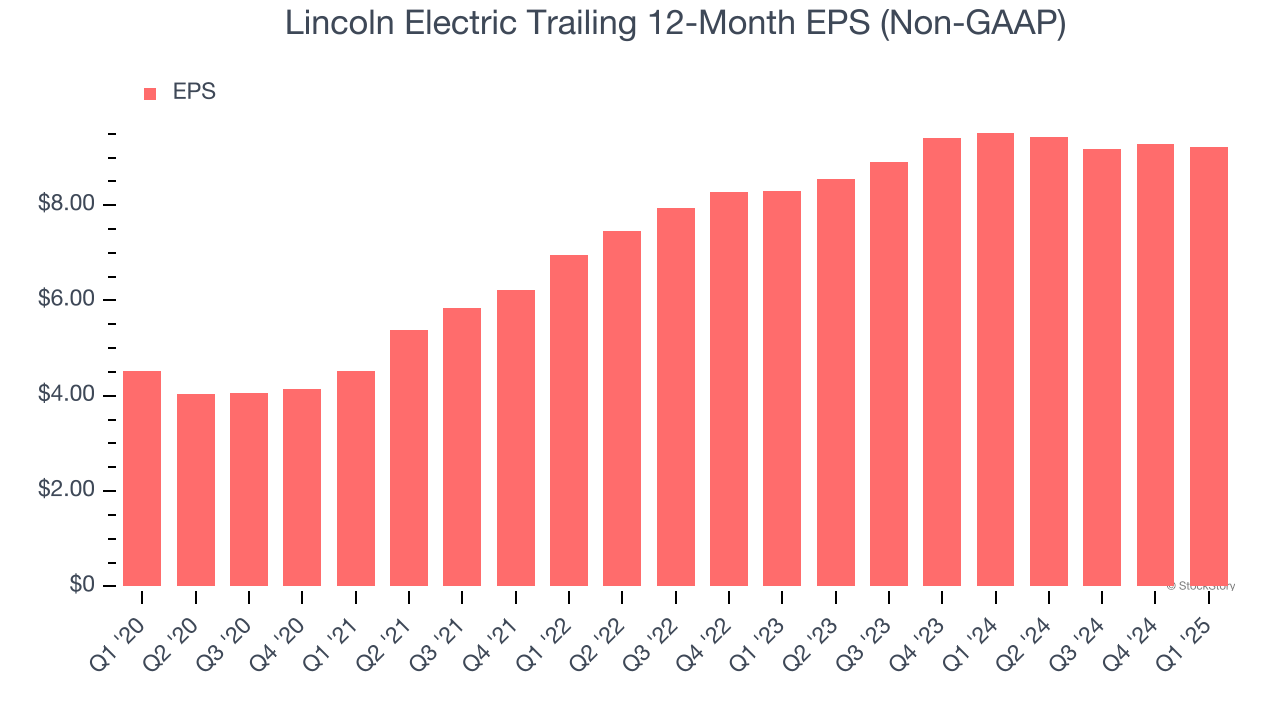
We can take a deeper look into Lincoln Electric’s earnings to better understand the drivers of its performance. As we mentioned earlier, Lincoln Electric’s operating margin was flat this quarter but expanded by 4.5 percentage points over the last five years. On top of that, its share count shrank by 7%. These are positive signs for shareholders because improving profitability and share buybacks turbocharge EPS growth relative to revenue growth. 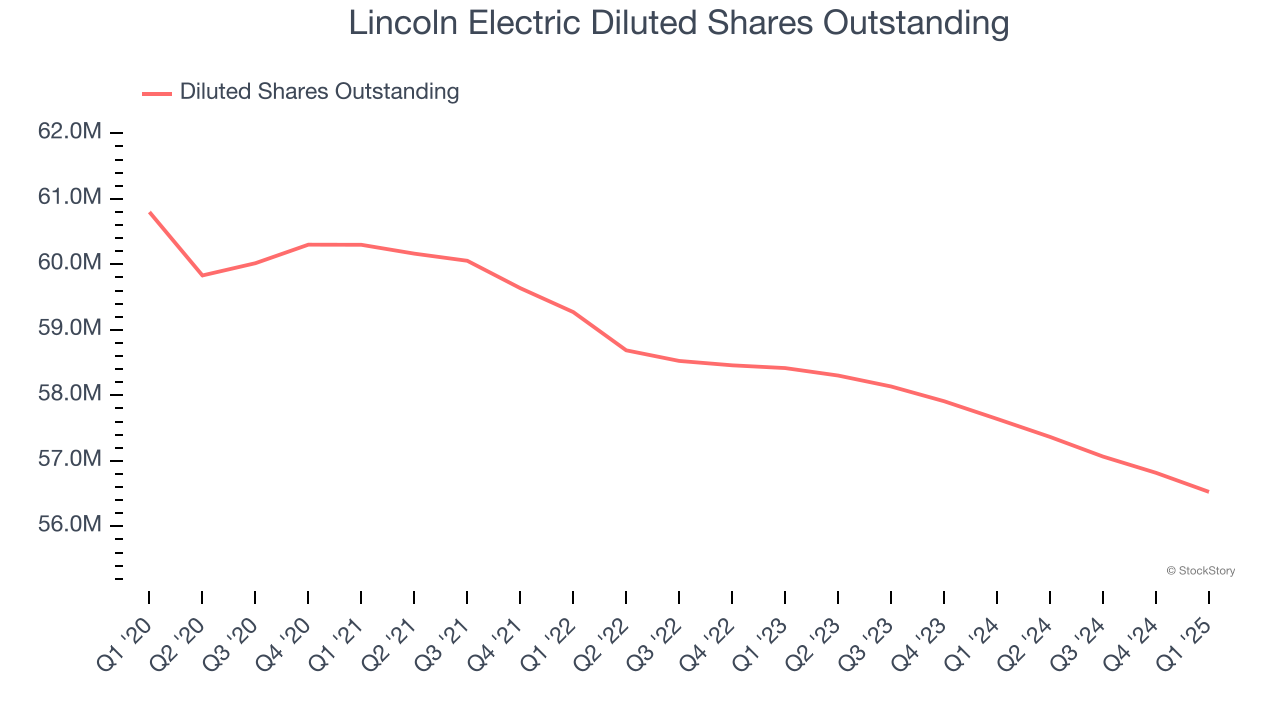
Like with revenue, we analyze EPS over a more recent period because it can provide insight into an emerging theme or development for the business.
For Lincoln Electric, its two-year annual EPS growth of 5.4% was lower than its five-year trend. We hope its growth can accelerate in the future.
In Q1, Lincoln Electric reported EPS at $2.16, down from $2.23 in the same quarter last year. This print missed analysts’ estimates, but we care more about long-term EPS growth than short-term movements. Over the next 12 months, Wall Street expects Lincoln Electric’s full-year EPS of $9.21 to grow 2.5%.
Key Takeaways from Lincoln Electric’s Q1 Results
We enjoyed seeing Lincoln Electric beat analysts’ revenue expectations this quarter. We were also happy its organic revenue narrowly outperformed Wall Street’s estimates. On the other hand, its EBITDA missed and its EPS fell short of Wall Street’s estimates. Overall, this was a mixed quarter. The stock remained flat at $184 immediately after reporting.
Big picture, is Lincoln Electric a buy here and now? The latest quarter does matter, but not nearly as much as longer-term fundamentals and valuation, when deciding if the stock is a buy. We cover that in our actionable full research report which you can read here, it’s free.







